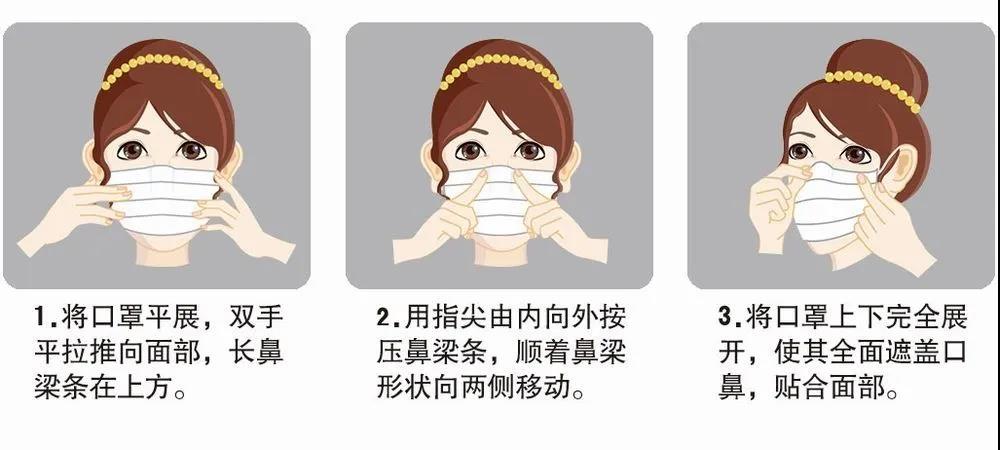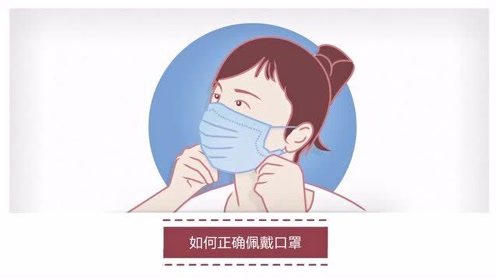how to wear a mask correctly

The World Health Organization (WHO) announced that the COVID-19 outbreak is a pandemic, highlighting the important role of personal protective equipment (PPE) in the healthcare environment.
Nurses, doctors, and other medical staff should wear personal protective equipment to minimize the risk of exposure to serious illness and injury. During the COVID-19 crisis, there are several types of personal protective equipment that can help medical staff avoid contact with infectious materials, including disposable gloves and protective clothing, N95 respirators, surgical masks, face shields, and safety glasses.
Disposable gloves and protective clothing: Disposable medical gloves are made of vinyl, latex or nitrile to help protect health care workers and patients from the spread of disease. The disposable protective clothing is made of polypropylene and is designed to protect the entire body, including the legs, back, head and feet.
N95 respirator masks: Traditionally, N95 respirator masks are used in construction sites and other industrial operations where workers are exposed to dust and small particles. During the COVID-19 pandemic and previous pandemics, medical staff wear these masks made of flexible non-woven polypropylene fibers to protect themselves and their patients from the spread of microorganisms, body fluids and particulate matter.
Surgical masks: Disposable surgical masks are generally made of non-woven fabrics bonded to a layer of textiles. Compared with woven fabrics, non-woven fabrics have better bacteria filtration and air permeability. Polypropylene is a thermoplastic polymer used in textile fibers and is the most commonly used material for making these masks. Disposable surgical masks can also be made of polystyrene, polycarbonate, polyethylene or polyester.
Face shields: Health care providers use face shields to help protect the mucous membranes in their face, nose, and mouth from splashes, sprays, and splashes of body fluids. Masks are usually used together with other PPE, and there are disposable, reusable and replaceable models. The shields of the mask are made of several materials, including polycarbonate, propionate, acetate, polyvinyl chloride, and polyethylene terephthalate (PETG). To
Safety glasses and goggles: Safety glasses and goggles can protect the wearer from flying debris and particles. Chloride is used to make safety glasses and breathing inhalers, and can be found in some medical devices.

How to wear a mask correctly
It’s not that as long as you put on a mask, you can worry about everything and stay away from the virus. The correct wearing method recommended by the Health and Anti-epidemic Center of the Hong Kong Department of Health should be divided into five steps: "select-wash-confirm-cover-stick".
① Choose: Choose a mask of the right size to fit your face;
② Wash: You must clean your hands before wearing a mask;
③ Yes: Determine the integrity of the mask, front and back, and up and down. For example, the colored side should face outward, and the metal strip should face upward;
④ Cover: The nose, mouth and chin should be tightly covered;
⑤ Pasting: Those with metal strips should be pressed tightly along both sides of the bridge of the nose by hand to ensure that they are tightly attached.
The difference between ordinary masks, surgical masks and N95 masks
①mask
Ordinary masks, also called face masks, are loose-fitting disposable devices that form a physical barrier around the wearer's mouth and nose to separate potential contaminants from the surrounding environment. Different masks have different uses and thicknesses, have different protective effects on people, and have different wearing comfort levels.
Common cotton masks and sponge masks are very simple in composition, made of different fibers, and have limited protective effect. Most surgical masks are self-priming filter masks, and their working principle is to pass harmful air through the filter material of the mask. After being filtered, it is inhaled or exhaled by a person.
Let me mention surgical masks here. The standard surgical mask is divided into 3 layers: the outer layer is a water blocking layer to prevent liquid splashing, the middle layer is a filter layer that can block 90% of 5 micron particles, and the inner layer is used to absorb liquid and moisture released by the wearer. Surgical masks are suitable for basic protection of medical staff or related personnel.
If worn properly, surgical masks can prevent droplets, sprays or splashes of large particles containing viruses and bacteria from entering the nose and mouth. It also helps to reduce one's own saliva and respiratory secretions splashing on others, thereby preventing others from infecting them. However, by design, surgical masks cannot filter or block very small (less than 5 microns) particles in the air, which may be spread by coughing, sneezing, or certain medical procedures. Because the surgical mask and the face stick are relatively loose and not tight, the surgical mask cannot completely protect bacteria, viruses and other contaminants from entering the wearer's mouth and nose.
In short, ordinary masks do not have filter materials; surgical masks have filter materials, but they cannot filter very small particles (<5 microns).
②N95 mask
N95 mask is actually a respirator. Respirator is a kind of respiratory protection equipment. Compared with ordinary masks, the design fits the face tighter and can filter the particulate matter in the air very effectively. Among them, N means Not resistant to oil, which can be used to protect non-oily suspended particles; 95 means that the filtration efficiency is greater than or equal to 95%, indicating that after careful testing, this respirator can block at least 95% of very small (0.3 Micron level) test particles.
If worn correctly, the filtering capacity of N95 is better than the ordinary masks and medical masks mentioned above. However, even if it is worn in full compliance with the requirements, it cannot 100% eliminate the risk of infection or death.
In order to function effectively, we need to choose an N95 mask that suits our face shape. Before using it, we must check whether it is suitable. Put on a respirator and adjust the rubber band so that the respirator fits tightly to the face without feeling uncomfortable. It is recommended to read the instructions carefully and see what different manufacturers have for "good fit".
pictures of how to wear a mask correctly
instructions on how to wear a mask correctly
how to wear a mask correctly
how to wear a mask correctly poster
how to wear a mask correctly video
how to wear a mask correctly wikihow
how to wear a mask correctly australia
how to wear a mask correctly with glasses
how to wear a mask correctly uk
how to wear a mask correctly pdf
所有评论仅代表网友意见
